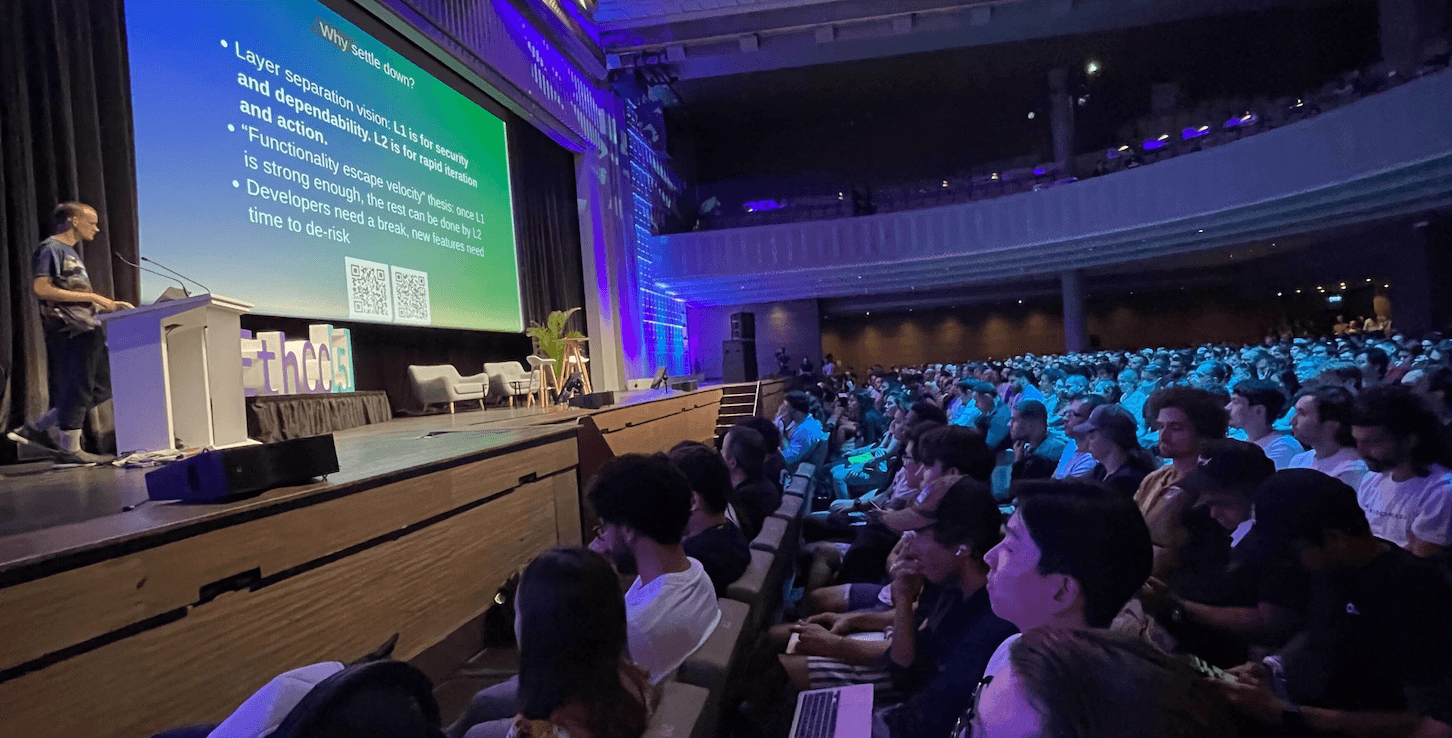No products in the cart.
- Latest
- Trending
ADVERTISEMENT
Vitalik Buterin, the founder of Ethereum, believes that Ethereum’s history is moving off-chain to reduce protocol complexity.
At the main stage of EthCC on July 21, Vitalik talked about the long-term future of Ethereum, saying that Ethereum is in transition and its development is “40% complete.”

According to Vitallik, there are five stages in the evolution of Ethereum. Merge, surge, on the verge, purge, and splash.
The merger took place around September, when Ethereum eventually moved to Proof of Stake, where surges were associated with sharding implementations, brought Berkle Trees on the verge, and purges reduced hard drive space required for validators. And the splash is “everything else fun.”
Vitalik insisted that:
“The difference between Bitcoin and Ethereum is that Bitcoin considers Bitcoin to be 80% complete, while Ethereum considers Ethereum to be 40% complete.”
After this year’s merger, Vitalik thinks:Those who work hard to make it should be very happy at this point. ” In addition, he believes Ethereum is “55% complete.” Then Sharding came and said Ethereum 100,000 transactions per second after a surge. ”
The next part of the roadmap is on the verge of what he expects in “2023 or perhaps 2024.” With this information in mind, Vitalik indicates that sharding needs to be implemented on the Ethereum mainnet sometime in 2023.
The founders of Ethereum discussed the long-term future of Ethereum and the need to continue to increase “capacity” while reducing “complexity”.
Regarding the critical integration of the Verkle tree, Vitalik has facilitated the need to reduce the amount of data validator nodes that need to be stored.
“No one uses a version of bitorrent where every user needs to download every movie.”
In the current state of blockchain technology, every node needs to keep a history of the entire blockchain, and the need for more storage is increasing.
Vitalik argued that this was not necessary as Ethereum developed. The goal of Layer 1 is “security and reliability”, and Layer 2 needs to be left to optimize for “quick iteration and action”.
EIP4444 eliminates the need for nodes to maintain the entire history of the Ethereum blockchain, and Vitalik believes that tools such as graphs are sufficient to store historical data. However, the Ethereum Protocol is not responsible for the storage of this information.
Vitalik thought that people wanted scalability and decentralization, so they couldn’t demand that this ever-growing amount of data be stored on nodes.
As we move forward, Vitalik has “upgraded quantum resistance”, increased transaction space in the base layer if ZK-EVM “works”, adopted a new “better” type of encryption, “open”. I think we should focus on “maintaining the mind”. .. “
With Vitalik’s vision of a simpler, more condensed version of the Ethereum protocol, someone should be able to understand the entire protocol given enough time, effort, and ability. He states that the current thinking is “because you can specialize, you don’t have to have anyone who understands the protocol.” This idea is inconsistent with Vitalik’s future of Ethereum.
Become a member of CryptoSlate Edge and access our exclusive Discord community, more exclusive content and analytics.
On-chain analysis
Price snapshot
Other contexts
Join now for $ 19 per month Explore all the benefits
Copyright © Pbird Media | Copyright © All rights reserved 2024

Copyright © Pbird Media | Copyright © All rights reserved 2024











